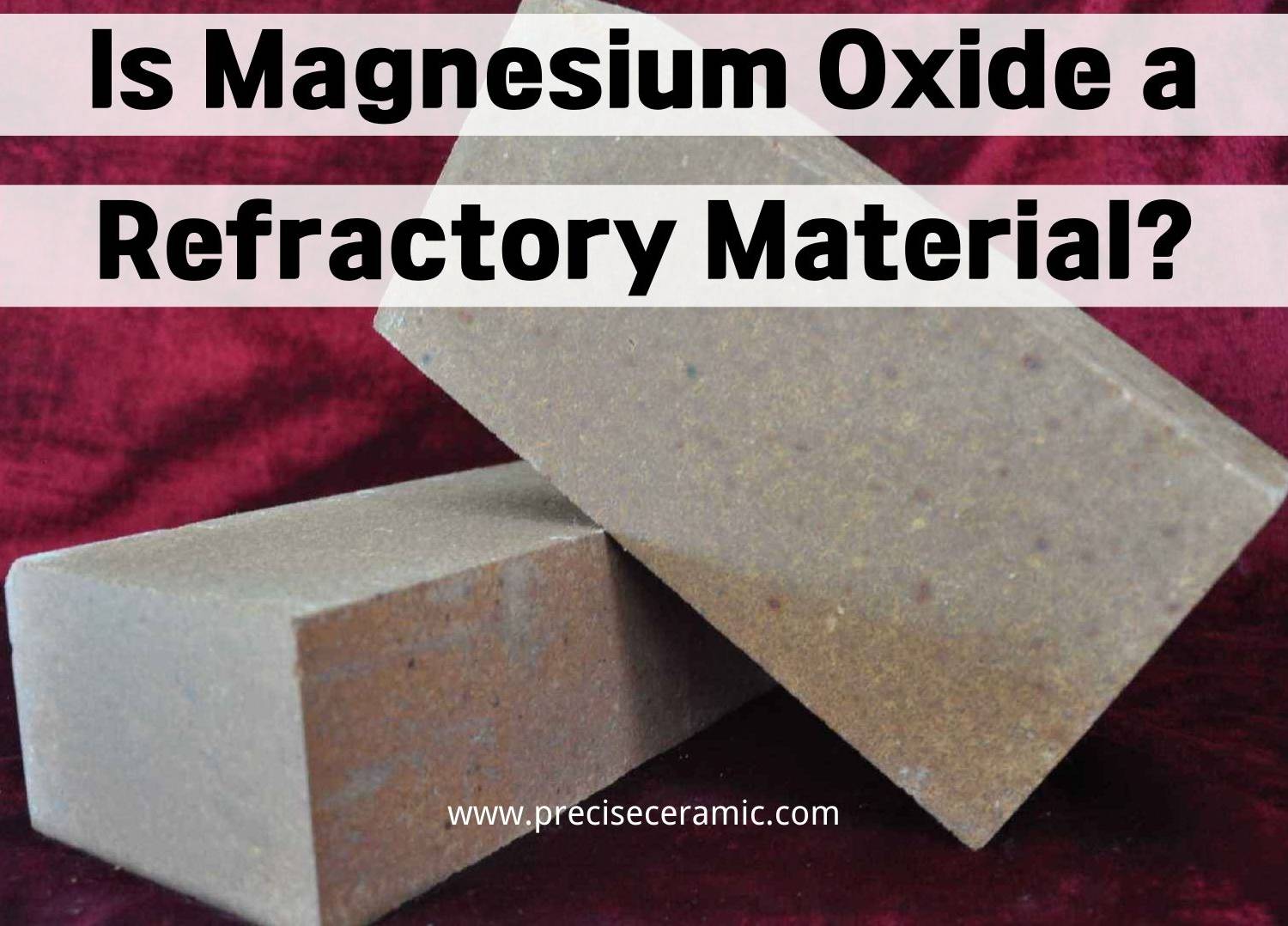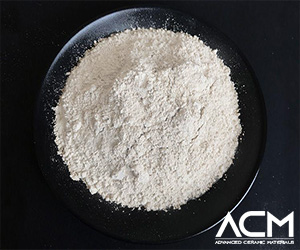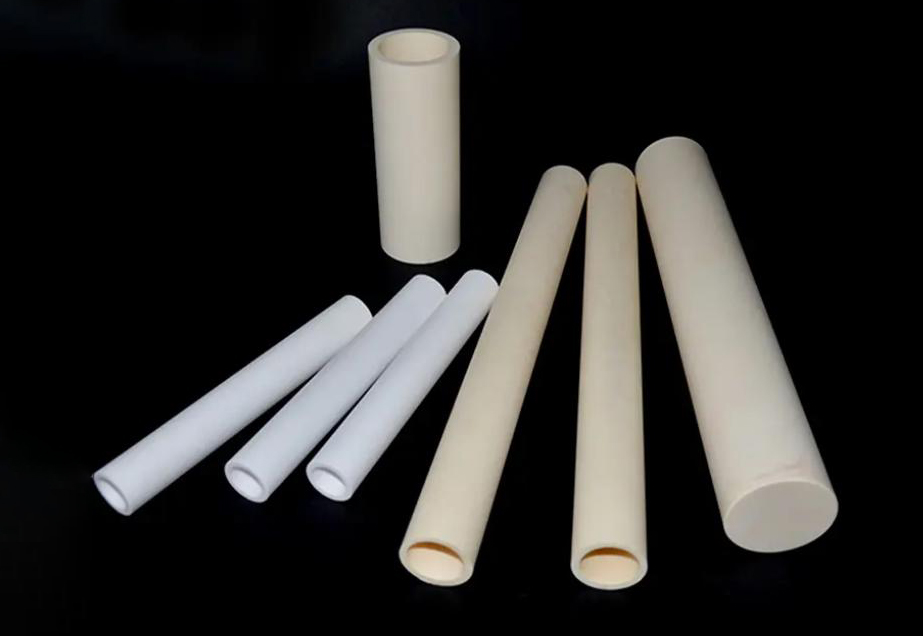Is Magnesium Oxide (MgO) a Refractory Material?

In the refractory industry, one of the materials widely used is magnesia. It is chemically known as magnesium oxide (MgO). Magnesium oxide is a choice material because of its impressively high thermal and low electric conductivities, which are highly coveted properties in refractory materials. So, yes, magnesium oxide is indeed a refractory material. In this post, we will discuss what magnesium oxide is, its properties, and its applications as a refractory material.
What Is Magnesium Oxide?
Magnesium oxide (MgO) is a white hygroscopic solid mineral, occurring naturally as periclase. The solid is physically and chemically stable at high temperatures. It is a natural source of magnesium (which is an important daily requirement in our nutrients), but magnesium oxide itself is produced by the calcination of magnesium carbonate or magnesium hydroxide. These properties make it an ideal refractory material. MgO has several essential applications today. It is an unimportant constituent of Portland cement in dry process plants. Magnesium oxide material is also utilized to treat wastewater, soil and groundwater remediation, treatment of drinking water, air emissions treatment, etc. Even in the food industry, it is used as a food additive where it serves as an anti-caking agent.

Properties of Magnesium Oxide
- The application of magnesium oxide in the refractory industry is related to its unique properties. Magnesium oxide has a very high melting point of 5,072 °F (2800 °C).
- It has high resistance to basic slags.
- It has high thermal conductivity and low electrical conductivity.
- Dead-burned magnesium oxide, produced in rotary kilns at over 1500 °C, has reduced chemical reactivity.
- Magnesium oxide particles are odorless and non-toxic. They are very hard and possess very high purity.
- Magnesium oxide particles appear in a white powder form.
MgO is, by far, most utilized by the refractory industry than in any other area or industry worldwide. In the United States, the refractory industry alone consumed about 56% of the magnesium oxide in 2004, while the rest was channeled into agriculture, chemical manufacturing, construction, and many other applications. Magnesium oxide (MgO) is used to produce essential materials, such as monolithic gunnables, rammables, castables, spinel formulations, and magnesia carbon-based refractory bricks. All these are used extensively in steel refractory linings. In refractory applications, limestone serves as a primary flux for removing slag.
Refractory Application of Magnesium Oxide
Refractory materials are materials that can withstand very high temperatures (above 1,000°F or 538°C), which is typical of many manufacturing processes. They help preserve the industrial processes where heat is encountered. Refractory materials are more heat-resistant than metals. These materials are used to line the hot surfaces inside industrial production plants. Magnesium oxide is one such material. It is used as a basic refractory material for crucibles and many industrial processes. The properties discussed above all contribute to the use of magnesia (MgO) as a refractory material. It has wide availability and is relatively affordable. This makes magnesium oxide (MgO) the choice refractory material for heat-intensive metal, glass, and fired-ceramic applications. Magnesium oxide is also used as an insulator in heat-resistant electrical cables. In ceramics, magnesium oxide doping is effective for inhibiting grain growth in ceramics and improving fracture toughness. Aside from its application as a refractory, magnesium oxide is widely used in many other applications, such as agriculture, mining, catalysts, power generation, pulp bleaching, wastewater treatment, etc.
What Are the Requirements for Refractory Materials?
Below are some essential requirements for selecting refractory materials:
- It must be able to withstand high temperatures.
- It must not conduct much heat.
- It should have a stable volume, i.e., does not undergo thermal expansion when exposed to high temperatures. In other words, it should have a low coefficient of thermal expansion.
- Must be able to withstand temperature fluctuations.
- Ability to withstand the action of furnace gas, including CO, SO2, CO2, CH4, H2O, and volatile oxides and salts in metals.
- The material should withstand the actions of processing materials reasonably.
- Must withstand impact and abrasion of solid, liquid, and dust-laden gases moving with high speed.
Other Types of Refractory Materials
- Silica brick
- Fireclay refractories
- High alumina refractories
- Monolithic refractory
- Zirconia refractories
- Silicon bricks
- Magnesium bricks
- Plastic refractory
Conclusion
Besides the few listed above, there are several other suitable refractory materials used in many industrial processes today. When selecting materials for the refractory application, you have to be sure that they satisfy the criteria highlighted above for the best results. Thank you for reading our article we hope it can help you to have a better understanding of magnesium oxide as a refractory material. For more information about ceramic materials, please visit https://www.preciseceramic.com/.
{{item.content}}
LEVE A REPLY
{{item.children[0].content}}
{{item.content}}
LEAVE A REPLY
SUBSCRIBE OUR NEWSLETTER
- Boron Nitride in Cosmetics: Enhancing Performance and Sensory Appeal
- Maximize MOCVD Yield and Purity with Hexagonal Boron Nitride Setters
- What Are the Advantages and Uses of Boron Nitride Ceramic Sheet?
- The Compression Annealing Advantage for Pyrolytic Boron Nitride
- Beyond Insulation: The Surprising Spectrum of Ceramic Thermal Conductivity










